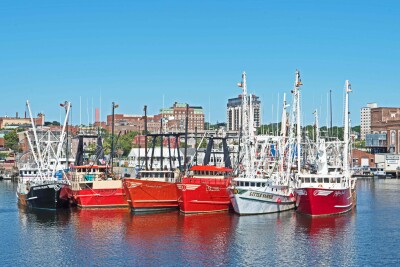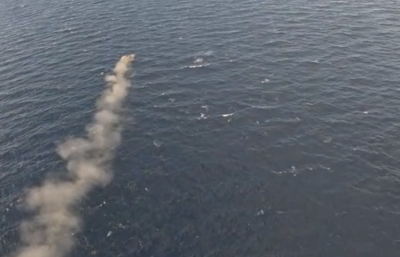On a collision course
From U.S. Coast Guard reports
One late June morning the skipper and sternman of a 43-foot fiberglass lobster boat were working about 20 miles from their northern New England home port until about 11:30 a.m. before heading north for home.
That same day, around midmorning, the skipper and sternman of a 34-foot lobster boat left the same port for their day's second trip to set 10 traps along a southerly course. They then headed east to set another string of traps.
On the northbound boat, the skipper manned the helm as the sternman napped, cruising at about 18 knots. The boat planed at cruising speed, requiring the skipper to stand to see over the bow.
The skipper sat on a stool near the helm to eat lunch. After motoring for 45 minutes, he stood up to scan for traffic and saw one vessel off his port bow that appeared to be setting traps about 1.5 to 3 nautical miles away. He sat back down to finish his lunch.
Across the bay the eastbound boat's sternman was preparing traps for the next set while the skipper manned the helm. At around 1:30 p.m., the sternman heard the diesel engine's supercharger whistle and felt the boat slow down as if it was taken out of gear. Looking over his shoulder, he saw the northbound boat bearing down.
The northbound boat's bow struck the eastbound boat's starboard side amidships. It ran across the eastbound boat's beam, crushing the wheelhouse and breaching the hull. The eastbound boat's sternman grabbed the northbound boat's trap rack and pulled himself aboard to avoid being tossed overboard.
The sinking boat's skipper was quickly spotted near the helm of his wheelhouse. The sternman on the 43-footer leapt into the water and retrieved the skipper, who was hauled aboard, unconscious.
The northbound vessel's skipper then called the local Coast Guard and notified them of the situation. He also called the harbormaster's office before steaming for his home port.
Ten minutes later, emergency medical personnel, the marine patrol and National Park Service rangers met the boat at the dock. Attempts to resuscitate the unconscious skipper were unsuccessful.
Lessons learned
The northbound boat was the stand-on vessel, and the eastbound boat was the give-way vessel. Still, under Rule 8 of the International Regulations for Preventing Collisions at Sea, both boats were required to take action to avoid collision.
If you're near another vessel and are unsure of its intentions, contact them via VHF to bring attention to your boat and discuss collision avoidance strategy.
Don't assume the other vessel sees you. Even in perfect weather, use every means possible to detect other traffic, including radar.
Whatever your boat's size, you're bound by the navigation rules. Share the nautical road and fish safe!
This article is based on U.S. Coast Guard reporting and is intended to bring safety issues to the attention of our readers. It is not intended to judge or reach conclusions regarding the ability or capacity of any person, living or dead, or any boat or piece of equipment.






